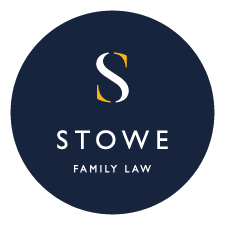What is cohabitation?
Cohabitation usually relates to unmarried couples who are living together as partners, without entering into a marriage or civil partnership.
Where a couple are married or have entered into a civil partnership, the breakdown of that relationship and the distribution of any assets is dealt with by the Matrimonial Causes Act 1973 and the Civil Partnership Act 2004, respectively. This legislation incorporates a very similar provision that gives the court discretion to reach an outcome which is fair for the parties.
However, where a couple have not been married or entered into a civil partnership and their relationship breaks down, the court deal with matters very differently.
At Stowe Family Law we have specialists who deal with the areas of law surrounding unmarried couples, but in this article, we have provided a snapshot of the four main types of situations as to how a property can be owned.
For anyone who is trying to get their ducks in a row, it would be helpful for you to consider which one of the four scenarios applies to you. Following this, are details of an interesting and leading case to show what the courts can look at when considering who owns what.
-
Who owns the property?
There are two ways in which a property is owned. There is the legal title which is the legal owner registered on the official copy of register of title. You then have the beneficial interests in the property, which can be different from the legal ownership and essentially the beneficial owners are the people who have the interest in the property. You can have more than one owner of a property and where there are two owners, it does not necessarily mean that they each have a 50% share.
The four main types of ownership are:
- Where a property is purchased in joint names and at the time of purchasing the property they sign a declaration of trust, which sets out their beneficial interests, in the transfer document.
- Where parties purchase a property in joint names and the transfer document purports to contain a declaration of trust setting out the beneficial interests, but the parties have not signed the transfer document.
- Where the parties purchase a property in joint names and the transfer document is silent in respect of the beneficial interests of the parties but there is clear evidence of an agreement between the parties as to their respective beneficial interests.
- Where a property is purchased in joint names, the transfer is silent about the parties’ beneficial interests and the evidence clearly shows that the parties never addressed their minds as to how the beneficial interests should be held between them.

Stack v. Dowden
Stack v. Dowden is a leading case from the House of Lords concerning the division of interest in a property, following the breakdown of a relationship of an unmarried couple. Prior to this case, there was considerable uncertainty for many years as to how beneficial interests should be quantified.
In this case, the parties began their relationship in 1975 and Ms Dowden purchased a property in her sole name in 1983. Ms Dowden paid for everything in this property. Mr Stack was a self-employed builder and decorator and Ms Dowden was an electrical engineer. They had four children between 1986 – 1991 and in 1993, they purchased a property in Willesden Green, in joint names.
At the time of purchasing this property, there was no declaration of trust, i.e. they had not said what their respective shares were on the Land Registry form. This property was purchased for £190,000 and Ms Dowden funded £128,830 from savings and the sale proceeds of her previous property. There was a joint mortgage of £65,025, two endowment policies, one in joint names and one in Ms Dowden’s sole name. Mr Stack agreed to pay the mortgage interest and premiums on the joint endowment, which totalled around £33,747. They both agreed to repay the mortgage by capital lump sums and by the end of their relationship, Mr Stack had paid £27,000 and Ms Dowden £38,435.

One of the key distinguishing facts of the case were that they both had separate bank accounts, had separate investments and savings and very much kept their finances separate from the other. The High Court declared that the property was owned in equal shares, but the House of Lords found that Ms Dowden was entitled to a 65% interest in the property and Mr Stack had a 35% interest. This was based on the contributions which they made during their relationship and how they operated their finances.
It was an usual case as it was a relationship of 27 years where the parties had four children, but they kept their affairs so rigidly separate. The way they conducted themselves during the relationship was a key factor as the court found that this was strongly indicative that they did not intend to share the assets equally.
Talk to Stowe – specialist cohabitation solicitors
Our expert team of divorce, family and cohabitation lawyers will guide you through your relationship break-up.
Our expert divorce law solicitors frequently work with unmarried couples who have separated and will advise you on the most effective and efficient process for you, taking your circumstances into account.
Request Free Callback
Submit your details, and we’ll arrange a free, no-obligation callback at a time to suit you. Please note that we cannot offer Legal aid.
more
advice
Newsletter Sign Up
Sign up for advice on divorce and relationships from our lawyers, divorce coaches and relationship experts.
Privacy Policy